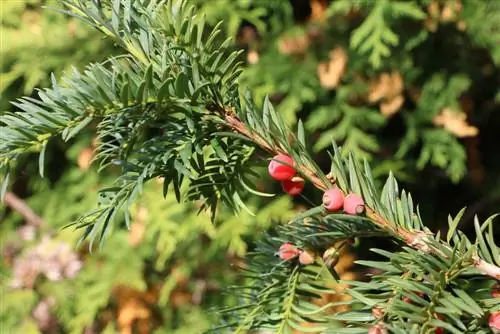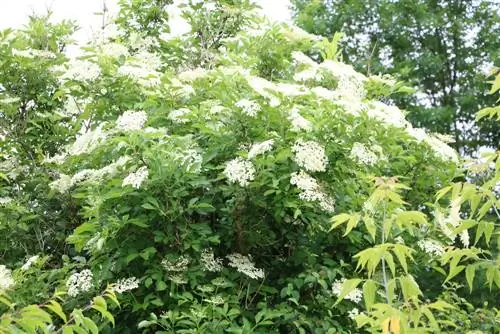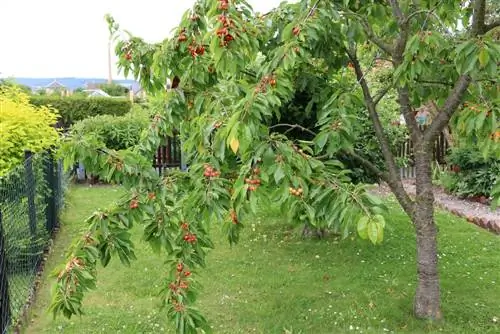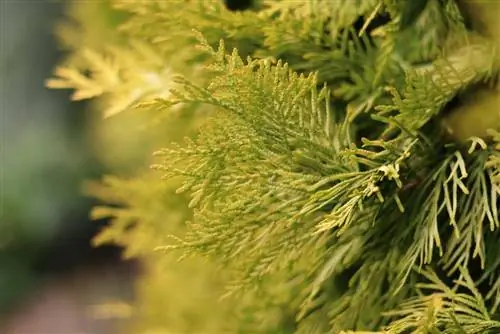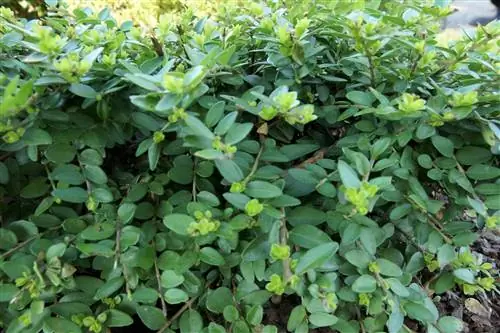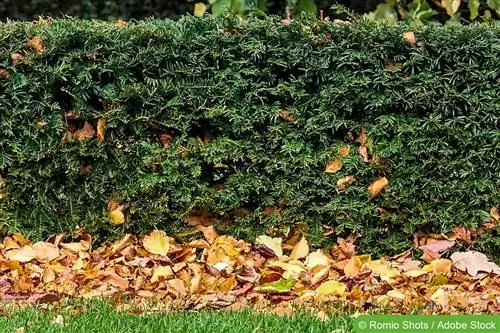- Author admin [email protected].
- Public 2023-12-17 03:39.
- Last modified 2025-01-24 12:45.
Not only the European yew (bot. Taxus baccata), the Japanese yew (bot. Taxus cuspidata) is also enjoying increasing popularity as a garden and hedge plant. However, it usually remains smaller than the domestic version. Their slightly brighter and wider needles can create an attractive contrast in your yew hedge.
Height and width
The maximum height of a yew tree depends on various factors. On the one hand, of course, the species plays a significant role, but on the other hand, so does the care and location. A European yew that is not pruned can grow up to 15 meters high, while dwarf yews often remain under one meter high. Japanese yew trees also come in different sizes. Some types of yew grow more in width than in height and are usually less suitable for planting a hedge. Ground cover plants can also be found under the yew trees.
Height and width of some yew species:
- Cup grater: about four meters high
- European yew: up to 18 meters high, about eight to 15 meters wide
- Golden yew: six to ten meters high, three to four meters wide
- Cushion yew: maximum 40 to 60 cm high, up to two meters wide
- Columnar yew: up to five meters high, one and a half to two meters wide
- Dwarf yew tree: approx. 65 cm high, approx. 20 cm wide
How much does a yew tree grow per year?
The speed of growth depends largely on the species, but also on the age of the yew. Seedlings grow quite slowly at the beginning. Young trees generally grow a little faster than older ones. Some cushion yews grow extremely slowly. On average, a growth of around 20 to 25 centimeters can be expected for young yews on loose soil, and around 15 centimeters for older ones. However, freshly planted or transplanted trees first put their energy into rooting before they grow in size.
How can I influence growth?
As with many other plants, you can influence the growth of your yew trees with a few not-so-labor-intensive measures.
Accelerating growth:
- Improve soil
- fertilize regularly
- water carefully
- frequent pruning
Improving the soil
Yew trees generally grow on all soils, but prefer slightly calcareous and slightly loamy soil. If your soil is rather sandy and light, you should improve it a little with mature compost or good topsoil. Your yew tree cannot grow well in hard, compacted soil. Loosen this heavy soil a little by mixing sand into it.
Fertilize regularly
A yew tree thrives quite well even without fertilizer. However, you can stimulate growth through regular fertilization. It's best to start right away when planting. Add a good portion of compost, possibly mixed with some horn shavings, into the planting hole. This promotes root growth. In the first few years, fertilize regularly in spring. Liquid fertilizer, mature compost and horse manure are equally suitable.
Water carefully
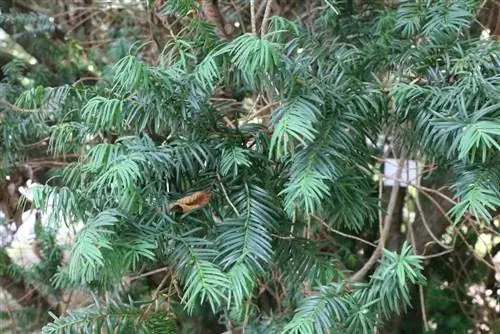
Although your yew tree will not die immediately if it is not watered additionally, it will grow more slowly if there is a lack of water. Therefore, you should water regularly, at least if the drought persists. This also applies in winter when the ground is frost-free. With a thick layer of bark mulch you can keep the moisture in the soil for longer.
Frequent pruning
It is often recommended to prune a yew hedge only once a year, but that is not fundamentally wrong. But if you want your hedge to become dense quickly, then consider an additional cut per year. As a result, your yew trees will develop a particularly large number of new shoots and the hedge will become opaque more quickly.
What are the special features of the cut?
So that your hedge reaches the desired dimensions and becomes opaque as quickly as possible, you should cut carefully. Only shorten the height of the yew tree when the desired height has been reached. Prune the hedge to the sides so that a trapezoid shape is created. In this way, all parts of the plant receive sufficient light and the hedge does not become bare as quickly. When cutting, remember that the yew tree is very poisonous in all parts and protect your skin from contact with plant sap.

